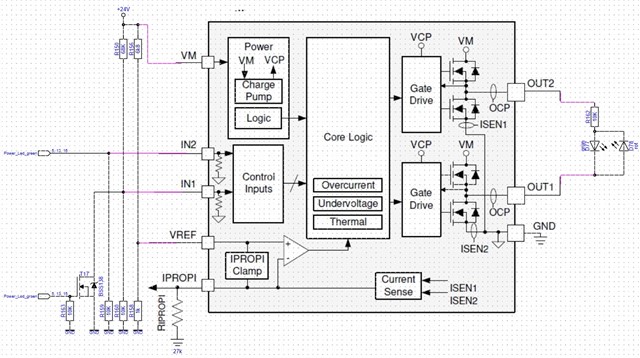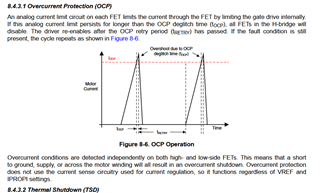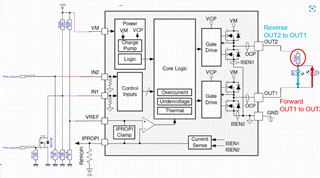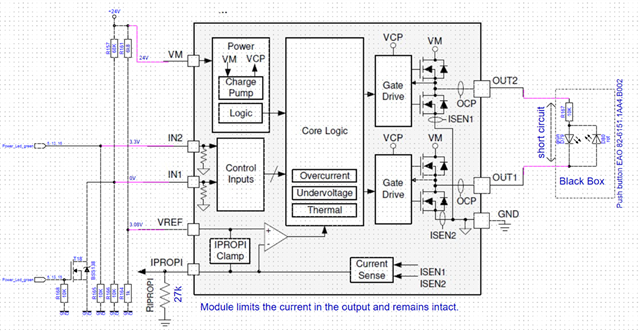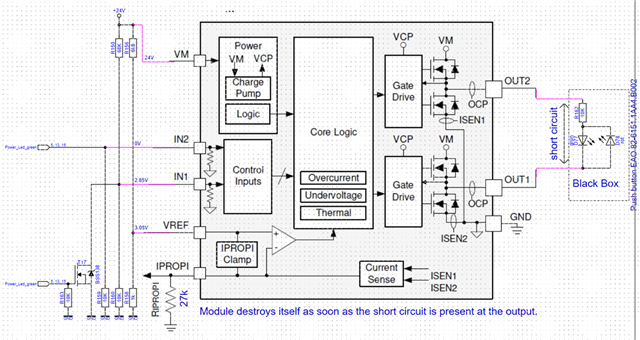Tool/software:
Hello TI Team,
I have a problem with the DRV8231A module.
The circuit shows the current setup which switches the LEDs at the output. If the 24V are switched on, the red LED lights up. If the device is switched on from standby, the two power LED inputs can be switched by the µP. It is then possible to switch to green or switch off both LEDs. The LEDs and the series resistor are only shown in principle as this is located entirely in the power button.
The current limitation for both switching states works.
If I short-circuit Out1/2 when both power LED inputs are 0V then the module breaks.
If both inputs are at 3.3V then the green LED lights up and I can short-circuit the output and the current is limited without destruction.
I don't currently understand why this doesn't work in the default setting.
